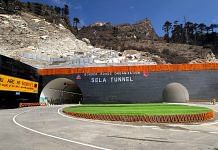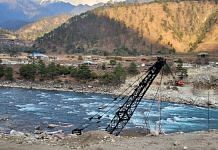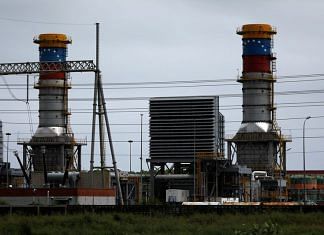Thank you dear subscribers, we are overwhelmed with your response.
Your Turn is a unique section from ThePrint featuring points of view from its subscribers. If you are a subscriber, have a point of view, please send it to us. If not, do subscribe here: https://theprint.in/
New climate reality in North-East India
It’s not surprising that most news articles about the environment and climate change across the North East India are negative; climate change make North East India both drier and wetter, the world wettest place- north east India has shown a tendency of moving towards a drier monsoon regime in recent times, floods too are unprecedented, when it does rain, the rains are heavier and more catastrophic at the same time that droughts become longer and more intense. Floods and droughts have regularly made the news in recent years and the scale of the crisis behind the headlines is stark.
Small scale indigenous farmers in Northeast India, hardly contributed to climate change, in the other words, they are good stewards of their biodiversity work, they have not abandoned their beliefs in sacred forests, land and rivers, at least not yet, but forest cover under government control declining rapidly. The Ministry of Environment, Forest and Climate Change (MoEFCC) released the India State of Forest Report (ISFR) 2021, more scary for North East India; increases in deforestation now threaten the region’s pristine biodiversity. Added to this, oil palm expansion is emerging as a big threat, can palm oil demand be met without ruining rainforest? Global deforestation pledge will surely be missed.
Northeast India tribal farmers are good at mirroring nature; they play an important role when it comes to restoring some land as habitat for nature. Farmers in Meghalaya continuing growing super crops Cassava, Buckwheat, Quinoa, Taro, with less fertilizer and water, more focus on decreased water usage as well as reduced carbon and methane emissions, perhaps even more significant in the face of a warming planet. Indigenous women in the neighboring states- Nagaland and Arunachal Pradesh coming together to share ancestral knowledge of millet, but they are heavily impacted by the rising temperature, changing rainfall pattern, long lasting droughts, however, rivers are drying up faster than previously thought, not the only result of recent time bad weather event. The mighty Brahmaputra is dying, we saw how world’s biggest hydroelectric dams on Yarlung River in the Tibetan Plateau is a living nightmare for entire Northeast India, destroying arable lands and ecosystems and cascading impacts, the flash flood carried a lot more debris and caused a lot more damage downstream.
ICIMOD study revealed that steep Himalayan valleys become commonplace for hydroelectric power projects developers, but there are unknown consequences for the rivers and incalculable potential for catastrophic hazards. History has many examples of dam disasters in China, took the lives of at least 85,000 people, suffered from environmental damage and lack of water and without even benefits of power, yet China, which controls Tibet, acts like an “upper riparian” state that exercises control over the water resources upstream and ignores the concerns of nations downstream. The truth is that large dams don’t deserve the world’s trust right now. The situation is also grim in our own country, because one can no longer say whether temple town Joshimath can be saved, and that’s scary for us, media across the globe illustrated satellite imagery as to how threatened the very survival of the temple town Josimoth, local communities are not responsible for the Joshimoth sinking, yet they are the ones that are suffering the greatest loss and damage
IPCC report shows that glaciers in the Hindu Kush Himalaya (HKH) would decline by two-thirds, if emissions do not fall. WMO study signals the threat of imminent and irreversible changes in Third Pole glaciers, permafrost, snow cover, lakes, rivers and their downstream effects have been studied since 2010 under the Third Pole Environment (TPE) program.
The rapid shrinking of glaciers and monsoon rainfall becomes more unpredictable due to climate change; uncertainty around the viability of hydropower projects in the Hindu Kush Himalayas is increasing.
Hydropower is based on the availability of water, which is becoming more uncertain due to climate change – this fundamental issue is ignored by project developers and policymakers.
These pieces are being published as they have been received – they have not been edited/fact-checked by ThePrint.












COMMENTS